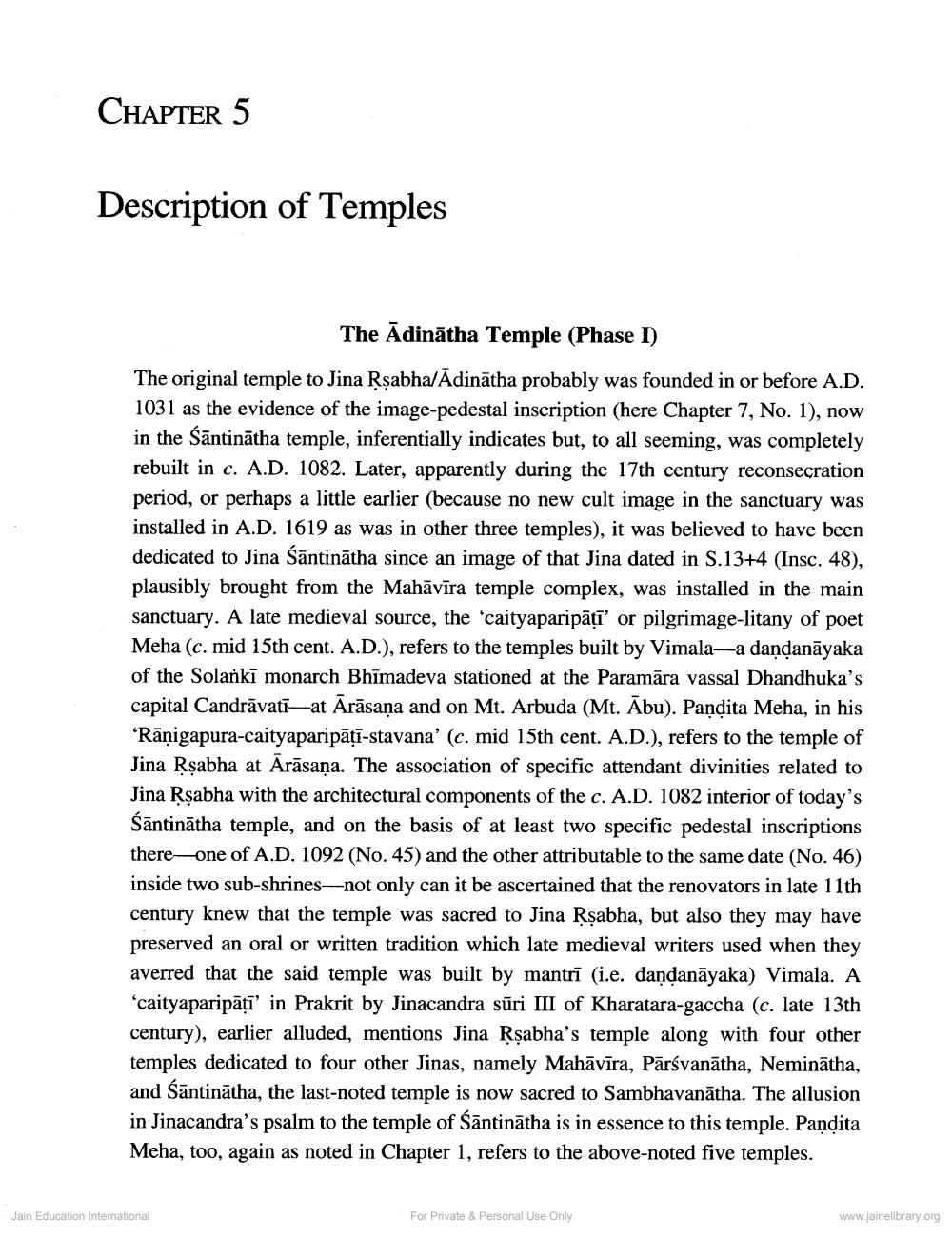________________
CHAPTER 5
Description of Temples
The Adinatha Temple (Phase I)
The original temple to Jina Ṛṣabha/Adinatha probably was founded in or before A.D. 1031 as the evidence of the image-pedestal inscription (here Chapter 7, No. 1), now in the Santinātha temple, inferentially indicates but, to all seeming, was completely rebuilt in c. A.D. 1082. Later, apparently during the 17th century reconsecration period, or perhaps a little earlier (because no new cult image in the sanctuary was installed in A.D. 1619 as was in other three temples), it was believed to have been dedicated to Jina Santinatha since an image of that Jina dated in S.13+4 (Insc. 48), plausibly brought from the Mahāvīra temple complex, was installed in the main sanctuary. A late medieval source, the 'caityaparipātī' or pilgrimage-litany of poet Meha (c. mid 15th cent. A.D.), refers to the temples built by Vimala-a daṇḍanayaka of the Solanki monarch Bhimadeva stationed at the Paramāra vassal Dhandhuka's capital Candravati-at Ārāsana and on Mt. Arbuda (Mt. Abu). Pandita Meha, in his 'Ranigapura-caityaparipātī-stavana' (c. mid 15th cent. A.D.), refers to the temple of Jina Rṣabha at Ārāsaṇa. The association of specific attendant divinities related to Jina Rṣabha with the architectural components of the c. A.D. 1082 interior of today's Śantinātha temple, and on the basis of at least two specific pedestal inscriptions there one of A.D. 1092 (No. 45) and the other attributable to the same date (No. 46) inside two sub-shrines-not only can it be ascertained that the renovators in late 11th century knew that the temple was sacred to Jina Rṣabha, but also they may have preserved an oral or written tradition which late medieval writers used when they averred that the said temple was built by mantri (i.e. daṇḍanayaka) Vimala. A 'caityaparipați' in Prakrit by Jinacandra sūri III of Kharatara-gaccha (c. late 13th century), earlier alluded, mentions Jina Rṣabha's temple along with four other temples dedicated to four other Jinas, namely Mahāvīra, Pārśvanātha, Neminātha, and Santinātha, the last-noted temple is now sacred to Sambhavanatha. The allusion in Jinacandra's psalm to the temple of Santinatha is in essence to this temple. Pandita Meha, too, again as noted in Chapter 1, refers to the above-noted five temples.
Jain Education International
For Private Personal Use Only
www.jainelibrary.org




